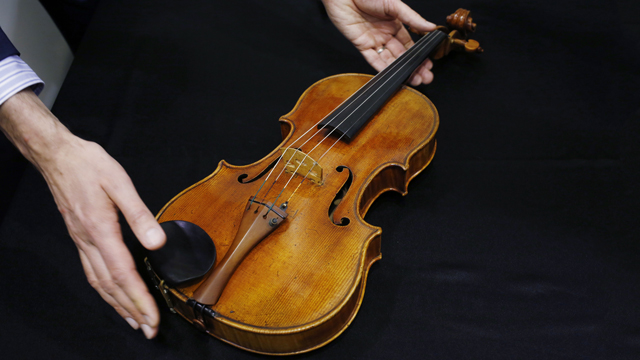Of the many theories swirling around why legendary Stradivarius violins are so great (aside from, you know, it’s just all in our heads), almost all have something to do with the wood. Maybe it was trees growing in a Little Ice Age or logs being stored in Venice lagoons or a special wood preservative. It makes sense, then, that one way to spot a fake is to go back to the wood — specifically, back to tree rings.
Nature has a fascinating interview with Peter Ratcliff, who uses dendrochronology, or the study of tree rings, to analyse historical instruments. By looking at the pattern of tree rings, which is influenced by annual weather, Ratcliff can date the instrument.
Ratcliff’s analysis can help make or break fortunes. He’s kiboshed two fake Strads, but he also matched the wood of two violins to trees used by Antonio Stradivari, multiplying their value. He explains how it works in Nature:
The bellies of most Western stringed instruments are made from spruce, whose tight, even growth is easy to analyse. When I am sent an instrument, I measure the width of each ring in the varnished wood. The unique pattern formed by the rings can be matched with those on thousands of instruments in databases, as well as cores extracted from the oldest living trees and ancient timber. The year of the most recent ring on an instrument is the earliest it could have been built.
The tree ring analysis is useful to buyers and auction houses who don’t want to be duped, but it has also yielded insights into the violin-making practices of yore. For example, Ratcliff identified 14 Strads made from the same tree. He tells Nature.
To make a violin today, you buy a wedge of spruce, split it down the middle and align the halves so you have a symmetrical pattern — a ‘book match’. It is clear that many early makers did not work in this way… I have also found that at least 14 violins and violas built by Antonio Stradivari between 1695 and 1705 are made from a single tree. My guess is that these old masters would buy a log, split it into wedges thick enough for half the soundboard, and hang them on a rack, sometimes for years, without worrying about book matches. Many soundboards are mismatched or come from different trees.
To learn more about the dark art of violin forgery (and how to outsmart it), check out the rest of the interview. [Nature]
Top image: A Stradivarius for sale in 2014. AP Photo/Kin Cheung
